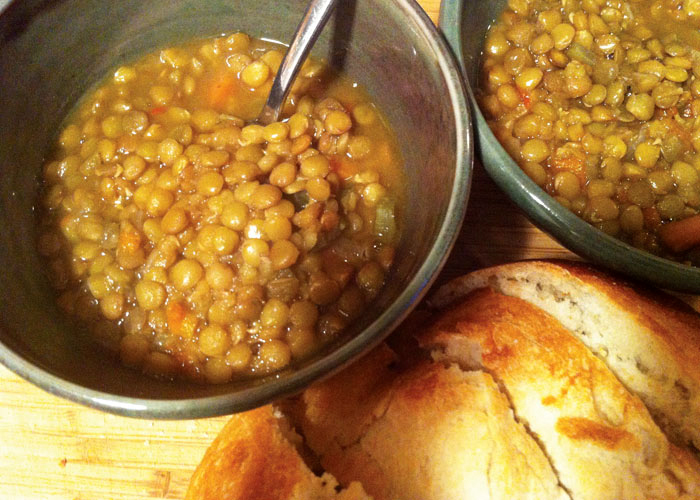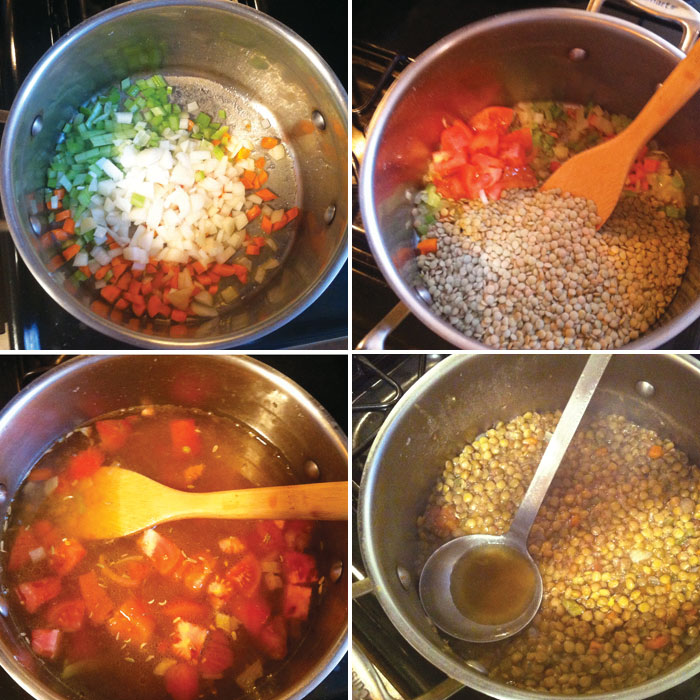Lentil soup
|
This soup is so thick, flavorful and comforting that I shall bet my hat that even meat-eaters and bitty babaroos will think it scrumptious. Lentils may not look or sound very exciting at first, but I have found that they are little hidden gems! Lentils are not only cheap and easy to find, they are also categorized as a Superfood. The Livestrong Foundation raves about their nutritional value, noting that they are high in fiber, calcium, copper, phosphorus, protein, potassium, molybdenum, iron and zinc, and very low in fat and salt. Lentils have vitamin A, thiamin, riboflavin, vitamin B6, vitamin B12, choline, niacin, vitamin C, vitamin K, pantothenic acid and vitamin E. The soluable fiber content of lentils lowers cholesterol, helps the body maintain blood sugar, and because lentils are so filling they can also help with weight loss. They contain no gluten making them perfect for folks with coeliac disease. Ah-mazing. As if all that goodness was not magic enough, lentils are also environmentally friendly. Crop production greenhouse gas emissions are largely driven by the manufacture of nitrogen-rich fertilizers, but lentils—as with all pulses—require little to no nitrogen fertilizer because they can process nitrogen from the air. Pulses can also improve the fertility of the soil, reducing the nitrogen fertilizer requirement of other crops grown therefore reducing the use of fossil fuels of an entire crop rotation. Wow. They require far less water than other crops, having a very low water footprint compared to wheat, soybeans or canola, and an incredibly low water footprint compared to beef, pork, and chicken. Double wow. Now doesn’t that all sound tasty? This recipe serves about six. Ingredients *I recommend Emeril’s Organic Vegetable Stock. Directions You can puree in a blender if you prefer, but I like it unblended. Serve with your favourite hot and crusty bread and remark on how yummy it tastes. Recipe adapted from this one. Thank you Alton! Sources: 1.Lemke, R. and Farrell, R. Nitrous Oxide Emissions and Prairie Agriculture. Janzen, H. Agriculture and Greenhouse Gases.
|











